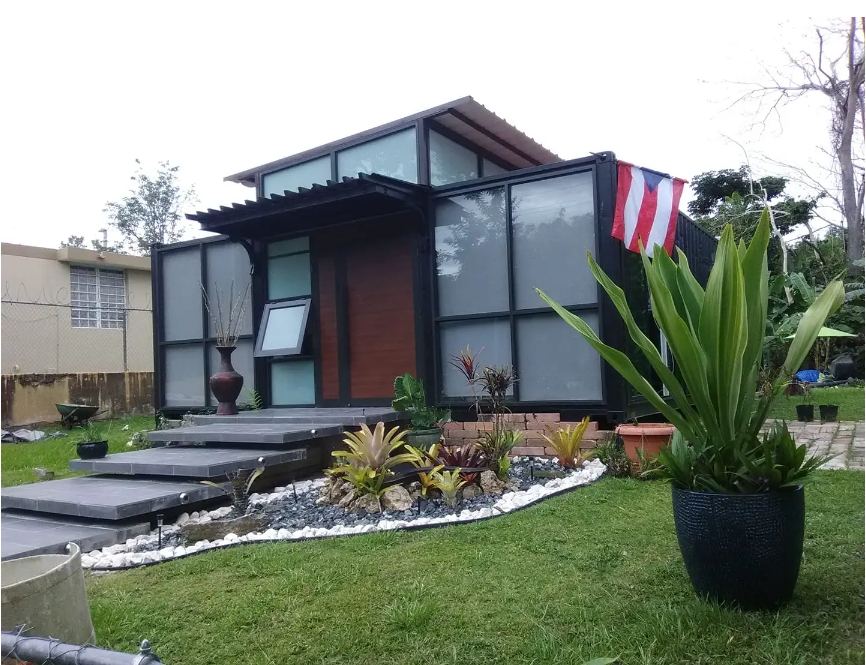1. Environmental climate
All insulation decisions start with climate, with insulation keeping the outside weather and indoor temperature constant. The higher the extreme temperatures you face, the better insulating you need your insulation to be. If building in a temperate climate, you may emphasize weatherproofing rather than insulation.

People build shipping container homes in the Arctic and tropical regions. Every climate requires different materials, designs and applications. Before you make any decisions about insulation, understand what you want it to do.
Wet and dry climates can cause different problems for home insulation, but wet climates are the most dangerous for steel homes. Water can rust steel and damage your home, so be careful to keep water away from steel. You also don’t want steel condensation to damage the interior of your home.
2.DIY or contractor
Shipping container homes are popular among DIY enthusiasts because shipping containers reduce the need for skilled labor. Before you design your home, decide how much work you want to do. A DIY home can cost less and you can be proud to build your own home. But your building choices may be limited by skills.
Contractors can make construction faster. DIYers often have to learn skills throughout the construction process, often through online videos. Contractors, although more expensive, already have the required skills.
3. Vapor Barrier
Shipping container structures are built differently than traditional residential structures because of the way steel boxes perform in wet environments. "Sweating" or water condensation inside the container. Water causes steel to rust and your home will deteriorate faster. It can also damage any interior building materials, such as wood or drywall.
You can create a vapor barrier in a variety of ways. Some people use wraps like Tweek on the interior of their homes. This method is the easiest to install and can also be a DIY project. However, it cannot solve the problem of molten steel condensation. Spray foam creates a tight seal directly on the steel, but the chemicals are hazardous during use, so its application is not for amateurs.
4. Heating, cooling or both
In addition to insulation, there are different solutions for both heating and cooling. Under the summer sun, the containers resemble greenhouses. To prevent the sun from affecting the interior temperature, extensive insulation is required unless a radiant blocking material that reflects heat is used. Homeowners often apply special paint or reflective materials to the outside of their shipping containers. Roof gardens, or roofs, are also beautiful in the summer as they block radiant heat.
In initially colder climates, you need two things: absorbing the sun's radiant heat and preventing the heat from leaving your home. Find a well-lit area and create a line around the outside of your home with non-reflective material.
Heat loss occurs primarily in two places: roofs and windows. A pane of glass can lose ten times more heat than an insulated wall. The more window space you have, the more you need to insulate your walls. Well-designed windows and a well-insulated roof will keep as much heat inside as possible.
5. Permanent residence or vacation home
Many people build container homes into three-quarter vacation homes. They use them when the weather is nice, spring, autumn and summer, but close them in winter. If it is not used in extreme temperatures, such as cold winters, you can design it with less heating or cooling power and less insulation.
6. Home decoration
Surface area affects how much heat will leave or enter the container. The more surface area you have, the more insulation you need. The most efficient shape is a large square or rectangle, as it minimizes the ratio between interior space and surface area.
Some designers like to use shipping containers creatively, and they give their homes irregular shapes. The more irregular your home is, the more insulation you will need.
7. Environmentally friendly materials
Many people build shipping container homes because they want an eco-friendly home. The shipping containers themselves are often recycled, but you can also find insulation materials that are good for the environment.
Some people choose natural materials for insulation. Families in India often line their homes with mud to protect themselves from the summer heat. Many homeowners choose renewable fibers such as wool, cotton or cellulose insulation made from recycled paper or cork.
Natural or recycled insulation may not be as environmentally friendly as first advertised. Natural products such as wool or cellulose are flammable and require the addition of flame retardant chemicals. They may also be less efficient insulators. If you want an eco-friendly home, research the entire production process to ensure your eco-friendly insulation is safe and effective.
8. Internal or external thermal insulation
Shipping containers limit the space you have because they have specific dimensions. A standard shipping container is 2.44 meters wide and 2.6 meters high. Choosing insulation materials will reduce indoor space.
When you install insulation in your home, you'll need to create a gap between the interior wall and the steel, removing a few inches of space along the walls, floors, and ceilings. However, internal insulation is usually cheaper and much easier to install.
Exterior insulation maximizes your space, but it's also exposed to the elements. Exterior insulation requires more maintenance and needs to be replaced sooner. It can also be more expensive and require a contractor to install it.
